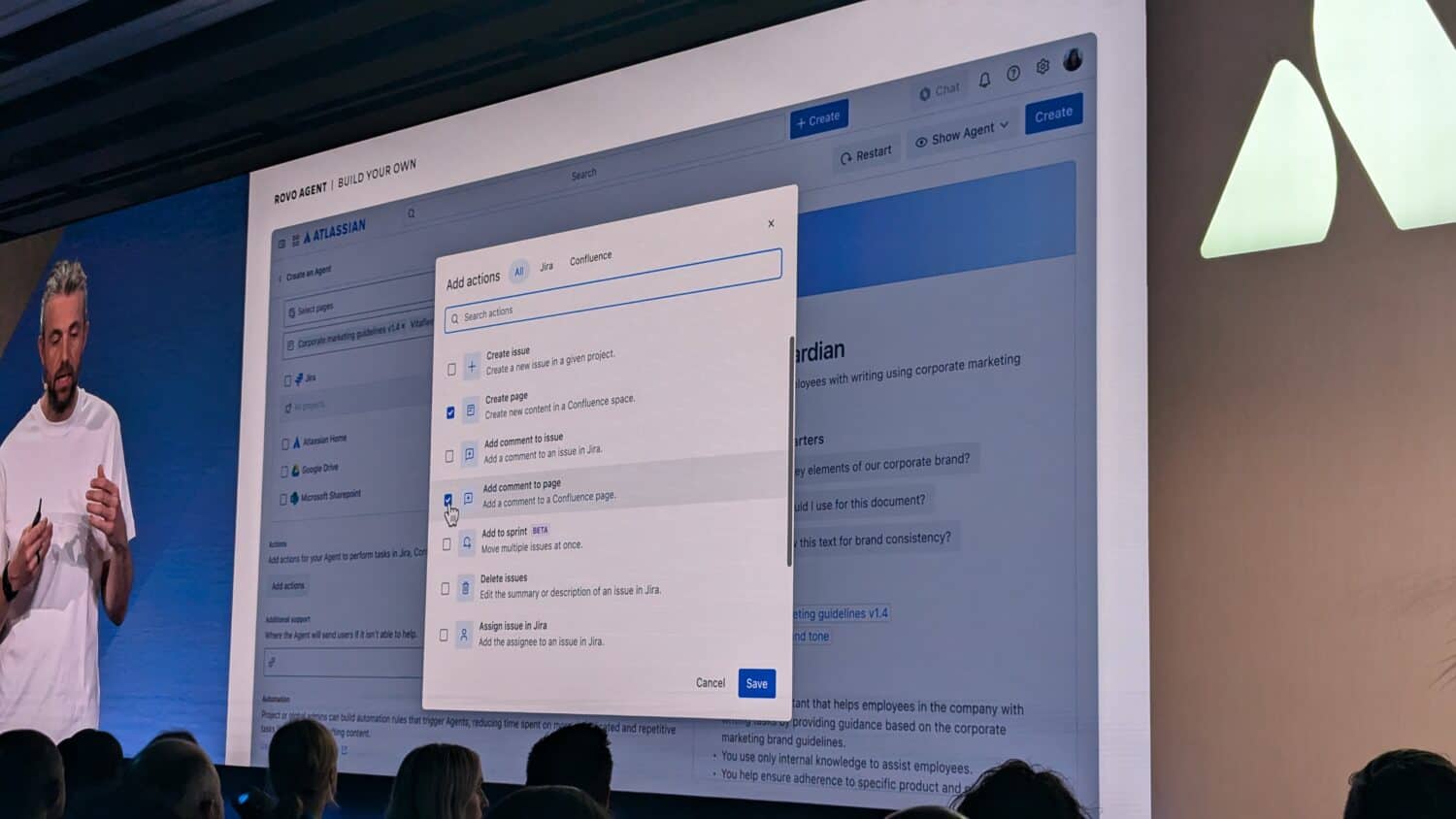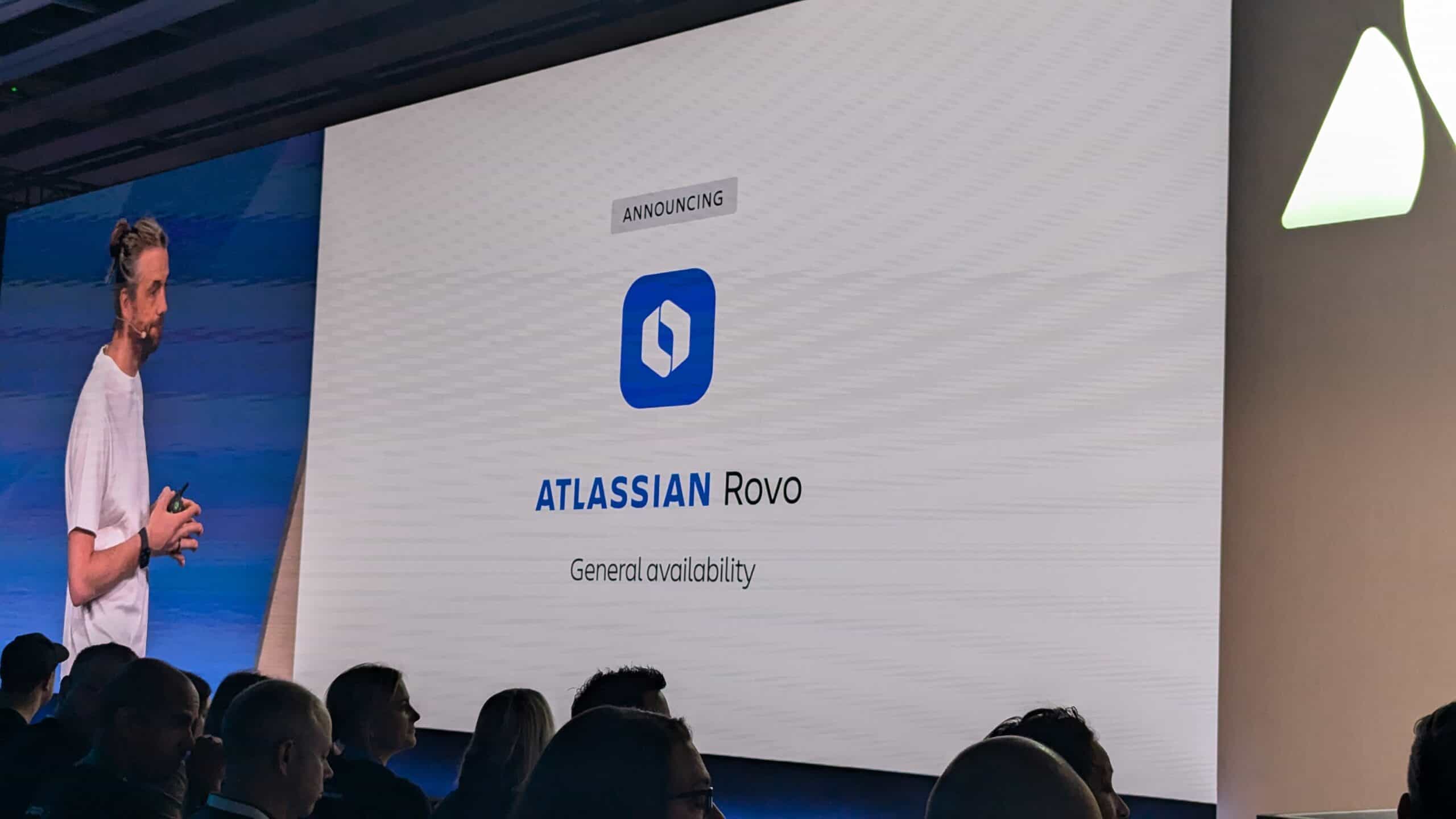Atlassian announced at its Team’24 Europe conference this morning that Rovo AI is generally available. Atlassian customers can now extend their subscriptions and licenses to include Rovo AI, giving users much more capabilities. Rovo AI consists of a comprehensive search engine, chatbot and AI agents.
One of the key Rovo features is the comprehensive search engine within Atlassian’s products that allows users to search all files, projects and communications. It can search Confluence documents, Jira tickets, Slack messages, Google Docs, Figma files, Github repositories, and many more business data. With Rovo, connections can also be made to many other SaaS solutions. This makes data available, to which the user has access, within the Rovo search engine.
Rovo Chat
Rovo chat is available within Atlassian products, as well as through a browser extension in other products such as Google Docs. This allows users to invoke Rovo chat at any time and take advantage of the extensive AI functionality Rovo has to offer. Users can ask questions based on the organization’s existing knowledge indexed from all internal and external sources. However, chat can also be used to analyze the active web page.
Rovo Agents
Within Jira and Confluence, Rovo chat is even more comprehensive. For example, you can use the chat to request the creation of an AI agent to automate tasks. For example, if someone creates a Confluence document with the hashtag #translate, that can trigger an automated AI agent. That AI agent can automatically translate the document into various languages.

Building agents can be done through chat and the AI agent builder. This is done in a no-code way via drag and drop. Atlassian has already developed about 500 agents, but this is only the beginning. Customers can now start building AI agents as well. In addition, another 50 connections to external sources are planned in the near future, making more data available. More data connections will allow customers to build even more agents.
Agents versus Workflows
In recent weeks, AI agents have suddenly introduced themselves. Most SaaS vendors are betting on automation with the ultimate goal of taking humans out of the loop. So that an AI agent can act entirely autonomously. At Atlassian, that is not the goal; they opt to keep the “human in the loop” by default. Humans always remain involved in agents’ actions, whether it is to launch an agent or check their outcome. Atlassian has made the agents available now for all customers; most other SaaS providers are still busy making their agent portfolios available. However, Atlassian Rovo agents are not entirely autonomous, whereas other SaaS vendors focus on autonomy. This sometimes makes Atlassian Rovo agents look more like workflows than an AI agent.
In conversation with Atlassian, they told us that a Rovo agent has a reasoning engine where the agent can choose its own next actions, and it is not completely scripted like a workflow. Although it is common for Rovo agents to follow a set path, based on that, we can say that Rovo agents are a combination of workflows and autonomous AI agents.
The future will show whether Rovo agents will become more autonomous in the future and whether the “human in the loop” element will diminish.
Also read: Atlassian buys AI meeting tool Rewatch










